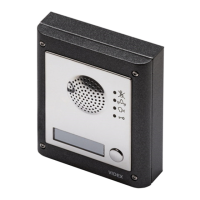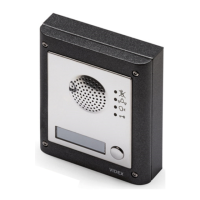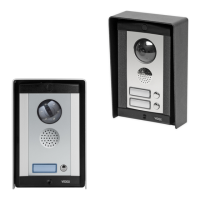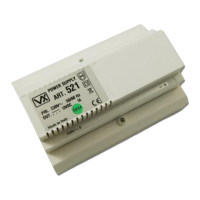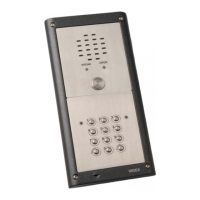66250754-4G-EN - V2.0 - 28/03/22
- 72 -
4000 Series GSM Audio Intercom - Technical Manual
4000 Series GSM Audio Intercom with Proximity
Additional User Information
UNDERSTANDING THE SIGNAL STRENGTH SIG AND BIT ERROR RATE BER
When a request for signal strength message is sent to the GSM intercom it will reply with a two part code.
The rst part of the code is a signal strength code SIG which will be between 0 – 31 or 99. Ideally the signal strength should be as
close to 31 as possible for the best possible performance. The lower the number, the weaker the signal. Signal strengths lower than
10 may cause operational problems such as loss of speech quality (and possibly missing DTMF tones) and/or network loss. A signal
strength of 99 indicates it could not be detected.
The second part of the code is the bit error rate BER. The bit error rate is used in digital telecommunication as a gure of merit for
how eectively the receiver (in this case the GSM intercom) is able to decode transmitted data (the data in this instance are the
various text message commands used to program the GSM intercom, described on pages 37 - 66, speech and DTMF signals used
by the GSM intercom for normal operation). It is the percentage of bits that have errors relative to the total number of bits received
in a transmission. Ideally the BER code should be as close to 0 as possible, the lower the BER the better. High BER codes can be
caused by noise, interference, distortion or bit synchronisation errors over the transmission of data to the GSM intercom and as a
result the problems described above (loss of speech quality, possibly missing DTMF tones and/or network loss etc.) can occur.
The example below shows the ideal reply to expect when the signal strength query 1111SIG? is sent to the GSM intercom:
SIGNAL = 31
BER = 0
OK VIDEX GSM
To achieve the best overall performance from the GSM intercom a high signal strength SIG and low bit error rate BER is required.
In the event that a low signal strength and high bit error rate is recieved it is recommended that the Art.434 GSM antenna or if
using the Art.434/BLOCK antenna is repositioned, where permissible, at the highest point to achieve the best signal. Where this is
not possible an alternative high gain antenna can be used, in particular Videx recommends using the Art.434/HG/5M or Art.434/
HG/15M high gain antennas or another suitable 4G GSM antenna with a standard SMA male connector.
DIALLING INTO THE GSM INTERCOM FROM ANOTHER TELEPHONE
There are three possible outcomes to dialling into the GSM intercom depending on the telephone number you are dialling in from
and the features setup during programming. The three possible outcomes are shown in the table below and are shown in order of
priority. For example, if the number is programmed to automatically activate the relay, this will take priority over the following two
options and if the telephone number is stored as a telephone number called from one of the push buttons, this will take priority
over the last option.
FUNCTION REQUIREMENT PRIORITY
Dial in to open the Door.
After dialling the GSM number, the relay will activate
and the call will be dropped.
The telephone number of the telephone dialling in
must be stored in memory location (dial to open
list) STR000 - STR999.
1st
Dial in to activate a call (live speech, activate relay/
auxiliary AO1, AO2).
After dialling the GSM number, the call will be answered
and two beeps will be heard. The speech will then be
live.
The telephone number of the telephone dialling in
must be stored in memory location:
STN001 - STN050
STD001 - STD050
STE001 - STE050
STF001 - STF050
2nd
Dial in to open the speech from a telephone number
not stored in the GSM intercom.
After dialling the GSM number, the call will be answered
and two beeps will be heard. You will then be required
to enter the 4 digit code (1111) to open the speech.
If neither of the two requirements above are met.
3rd
UNDERSTANDING THE BEEPS
Functions and errors are indicated by beeps from the GSM intercom panel. The following table will help you understand the dierent
beeps heard and what, if anything, needs to be done in response to the beeps.
Also in the table please note that phrases are shown in brackets ( ) in bold to indicate that the GSM’s speechboard is switched ON
(i.e. when a particular event occurs this is what the GSM will announce through the speaker).
BEEP REASON SOLUTION
Short beeps at 1 second
intervals.
Relay or auxiliary output activated. None, this is normal.
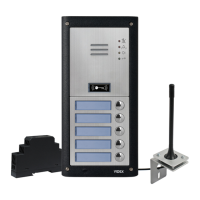
